Abstract
Japan’s aquaculture industries are diverse, with marine fisheries producing fish, shellfish, seaweed, and ascidians. According to the latest statistics for 2022, farmed fish production reached a subtotal of 237kt, making it the largest part of the aquaculture industry. To date, Japan’s aquaculture industry has seen a steady increase in production volume thanks to technological innovation and the introduction of sustainable management. In particular, fish farming is expanding in response to growing demand, and high-added-value fish species such as tuna and sea bream are also being farmed. There is also demand for shellfish and seaweed rooted in Japan’s traditional food culture, and aquaculture is therefore also thriving. On the other hand, there are risks that could affect production due to factors such as environmental change and marine pollution. Therefore, the development of sustainable aquaculture methods and strengthening management systems will become increasingly important in the future.
Fish farming fish production
Fish production in Japan’s marine fisheries has undergone various changes between 1956 and 2022. At its peak in 1995, production reached a record high of 279kt, but has now fallen to 85% of that peak. The reasons behind this decline include overexploitation of fishing resources, changes in the marine environment, and stricter fishing regulations. In addition, changes in the economy and society may also be causing changes in consumer eating habits, which in turn may be changing fishing targets and demand. Past trends have highlighted the increasing importance of sustainable fisheries management and resource conservation.
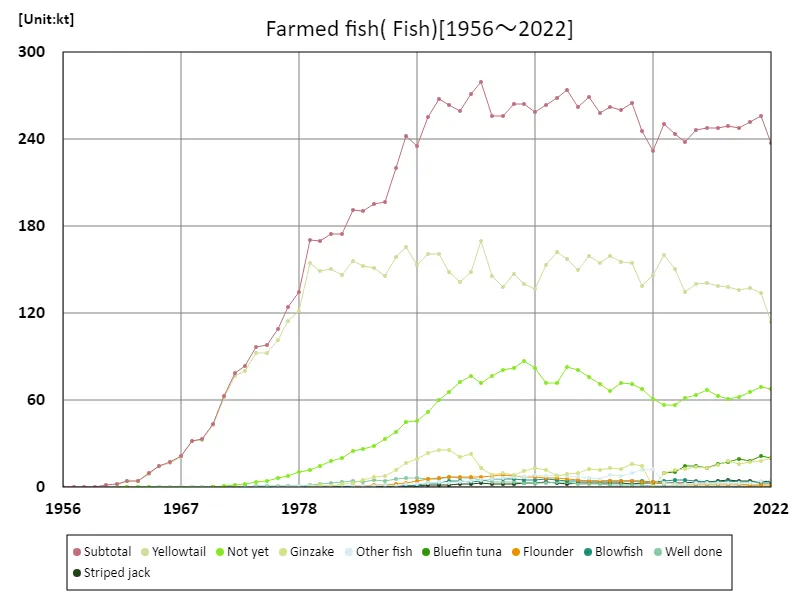

The maximum is 279kt[1995] of Subtotal, and the current value is about 85%
Shellfish farming fish production
Shellfish production in Japan’s marine fisheries has undergone changes between 1956 and 2022. Production peaked at a record 496kt in 2002, and is now down to 68.2% of that peak. The reasons behind this decline include overexploitation of fishing resources, changes in the marine environment, and increased fishing pressure. In particular, with regard to shellfish farming and fishing, past overfishing may have caused resource declines and habitat destruction. Additionally, changes in consumer eating habits and an increase in imported shellfish are also thought to be affecting shellfish fisheries. Past trends have made sustainable fisheries management and the protection of shellfish resources increasingly important.
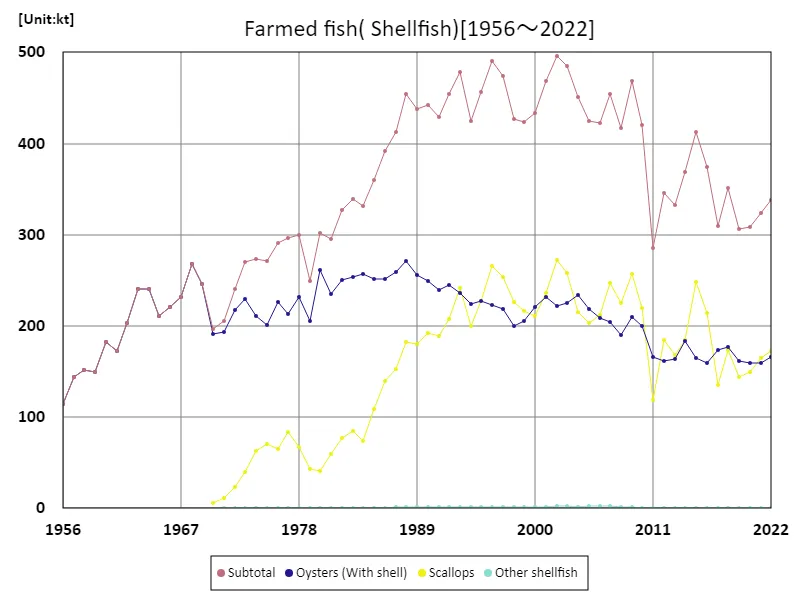

The maximum is 496kt[2002] of Subtotal, and the current value is about 68.2%
Seaweed Fisheries Production Statistical Survey Production
Seaweed production in Japan’s marine fisheries has been attracting attention since 1956. Statistics for that year showed that total seaweed production reached 639kt, with an average of 256kt and a total of 1.28Mt. One characteristic that has stood out so far is that seaweed is deeply rooted in Japan’s food culture, and the demand for seaweed is stable and high. In particular, seaweed such as nori and kelp, which are used in sushi and other Japanese cuisine, are widely loved both in Japan and overseas. Moreover, in recent years, demand has been on the rise due to growing health consciousness and the expanded use of seaweed in the food industry. Seaweed fishing production is attracting attention as one way of making effective use of Japan’s marine resources, and efforts toward sustainable fisheries management and marine environmental protection are becoming increasingly important.
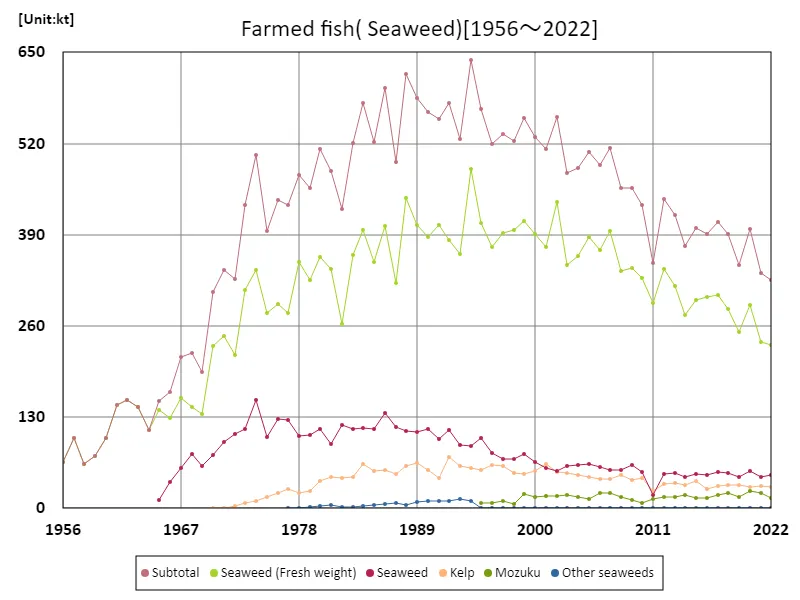

The maximum is 639kt[1994] of Subtotal, and the current value is about 50.8%
Fisheries production statistics survey of ascidians
Ascidian production in Japan’s marine fisheries has undergone various changes between 1966 and 2022. Production peaked at a record 19.6kt in 2017 and is now down to 50.2% of the peak. Possible factors behind this decline include a decrease in ascidian resources, changes in their habitat, and increased fishing pressure. Ascidians are important for both food and aquaculture, but production has been declining in recent years due to fishing pressure and environmental changes. Changes on the demand side are also having an impact, with diversifying food culture and declining demand affecting trends in the fishing industry. Based on past trends, sustainable fishing and aquaculture management of ascidians is now considered important, and efforts are needed to protect resources and for the future of the fisheries industry.
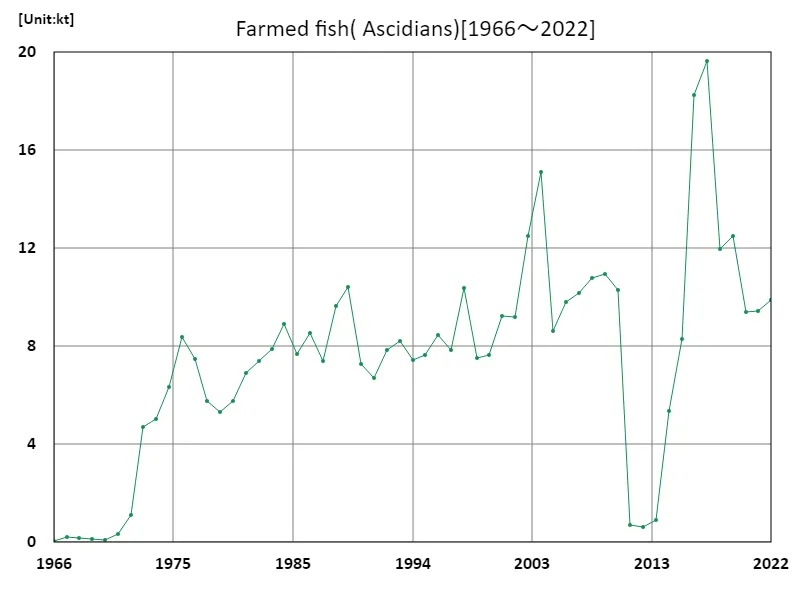

The maximum is 19.6kt[2017] of Ascidians, and the current value is about 50.2%
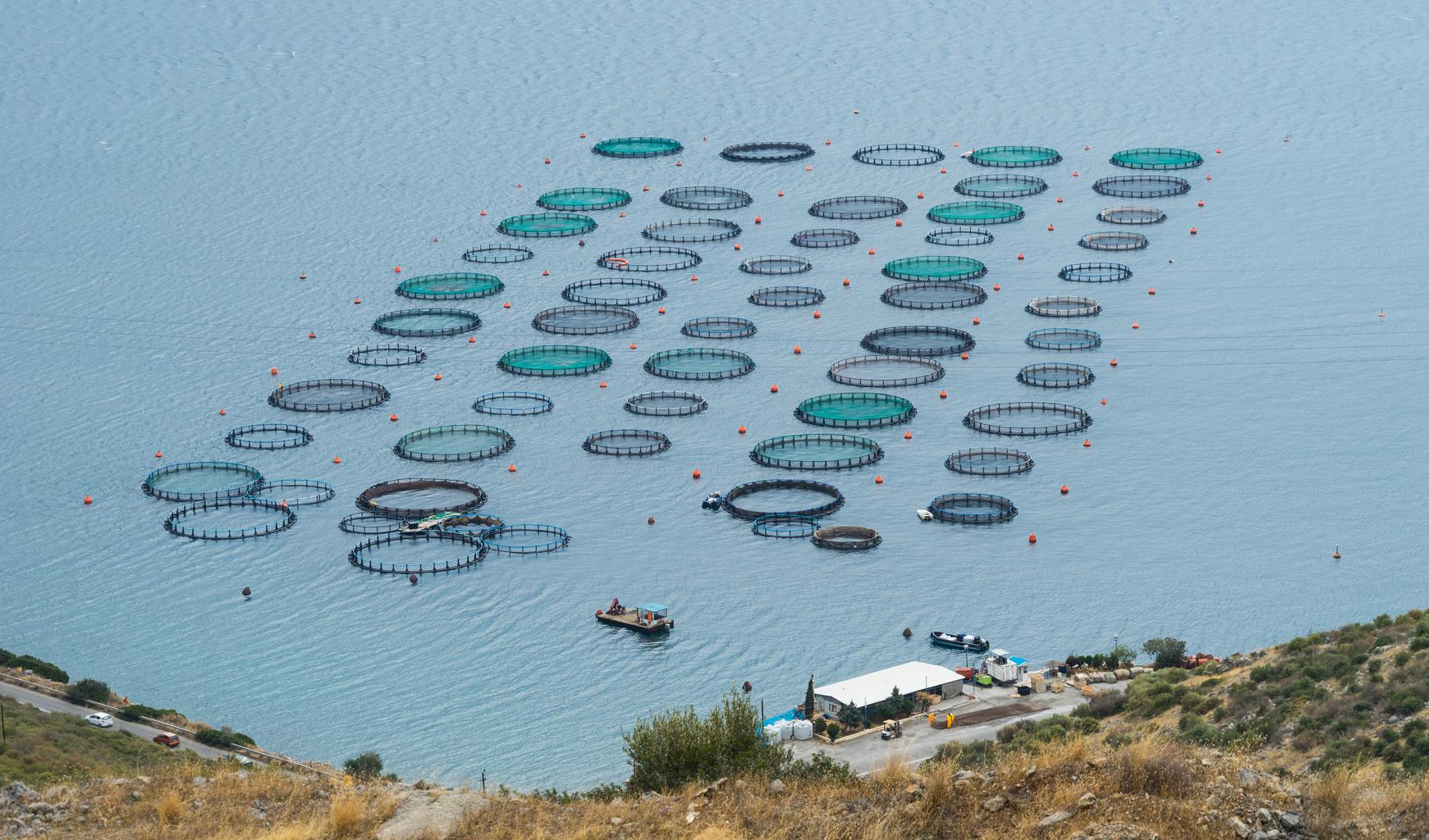


Comments